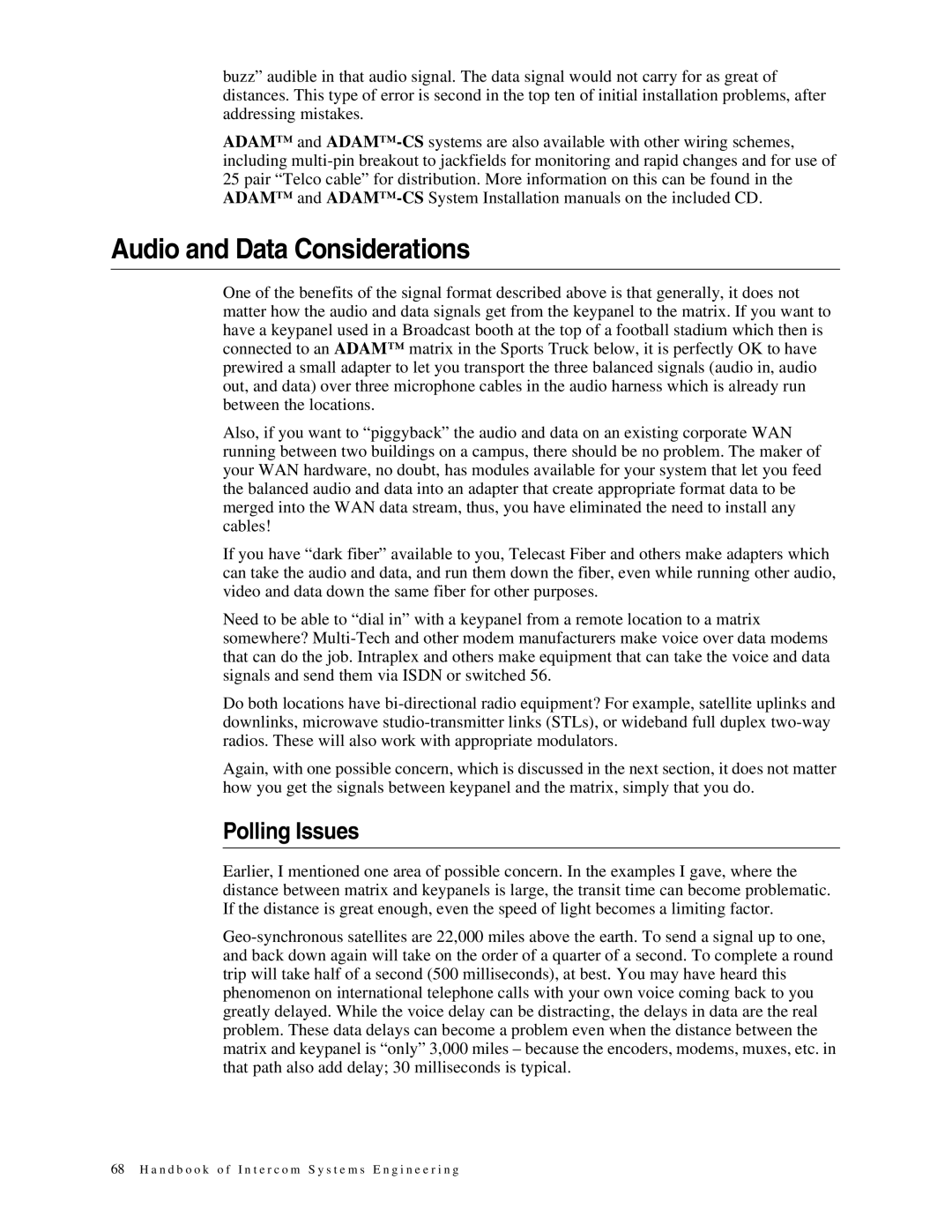
buzz” audible in that audio signal. The data signal would not carry for as great of distances. This type of error is second in the top ten of initial installation problems, after addressing mistakes.
ADAM™ and
Audio and Data Considerations
One of the benefits of the signal format described above is that generally, it does not matter how the audio and data signals get from the keypanel to the matrix. If you want to have a keypanel used in a Broadcast booth at the top of a football stadium which then is connected to an ADAM™ matrix in the Sports Truck below, it is perfectly OK to have prewired a small adapter to let you transport the three balanced signals (audio in, audio out, and data) over three microphone cables in the audio harness which is already run between the locations.
Also, if you want to “piggyback” the audio and data on an existing corporate WAN running between two buildings on a campus, there should be no problem. The maker of your WAN hardware, no doubt, has modules available for your system that let you feed the balanced audio and data into an adapter that create appropriate format data to be merged into the WAN data stream, thus, you have eliminated the need to install any cables!
If you have “dark fiber” available to you, Telecast Fiber and others make adapters which can take the audio and data, and run them down the fiber, even while running other audio, video and data down the same fiber for other purposes.
Need to be able to “dial in” with a keypanel from a remote location to a matrix somewhere?
Do both locations have
Again, with one possible concern, which is discussed in the next section, it does not matter how you get the signals between keypanel and the matrix, simply that you do.
Polling Issues
Earlier, I mentioned one area of possible concern. In the examples I gave, where the distance between matrix and keypanels is large, the transit time can become problematic. If the distance is great enough, even the speed of light becomes a limiting factor.
68 H a n d b o o k o f I n t e r c o m S y s t e m s E n g i n e e r i n g
